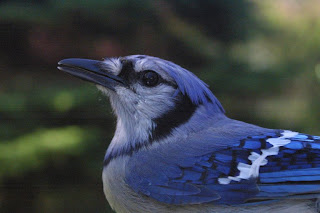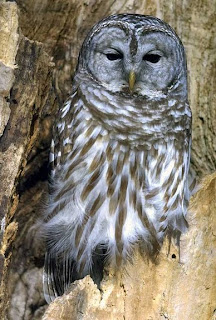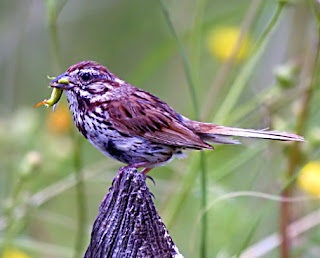Visual Communication
Blue Jay
Communication occurs when the activities of one animal influence the activities of another. Communication is primarily: VISUAL or VOCAL, although combinations certainly occur. Many are very stereotyped (DISPLAYS); i.e., gaping in American Goldfinch.
Visual Communication
1. THREAT DISPLAYS occur in hostile encounters and indicate the potential aggressiveness of displayer. Different species have different displays.
gulls: head up, open wings, bill downward.
many songbirds: head forward, horizontal with body, gaping with wings raised.
2. SUBMISSIVE (appeasement) display
Black hood of Franklin's Gull = threat display--but pairs must avoid aggression: during the submissive, FACING AWAY DISPLAY, birds turn heads away from each other. This way they can approach during courtship.
In general, submissive postures reduce the aggression of the opponent, indicates fear. Postures in a Blue Jay's crest angle indicates fear--the higher the crest, the more aggressive.
Hermit Thrushes are the only thrush to show Tail Raising: birds lift tail quickly. This serves both as species recognition and aggressive display: the higher the tail raise greater the aggressiveness.
3. BEGGING DISPLAYS: usually in young birds demanding food crouch, flutter wings, open mouths.
4. SEXUAL DISPLAYS Bring the sexes together and promote successful reproduction
American Goldfinch





Comments
Post a Comment